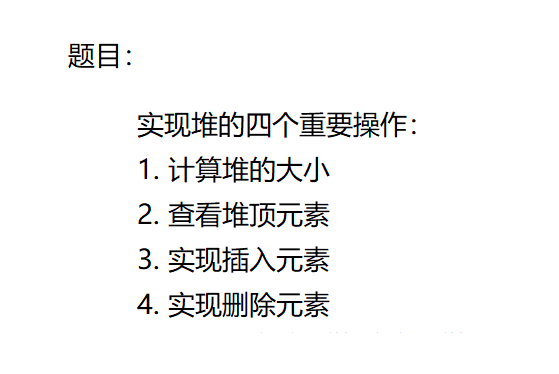
题目分析
堆是一种非常常见的数据结构,使用的频率也非常的高,小伙伴们经常使用堆,但是往往不关注其实现过程,今天给小伙伴们梳理一下堆的实现过程。
递归
堆是一个完全二叉树,可以通过数组进行实现,数组的下标对应节点的编号。设根节点的下标从0开始,那么它的左孩子和右孩子的编号为1和2,我们可以得出一个规律,下标为i的节点,它的左孩子和右孩子的编号为i x 2 + 1和i x 2 + 2。
我们以一个最小堆为例子,插入元素,要想获得最快的时间复杂度,因此我们要从尾部进行插入,让它和它的父节点进行比较,如果插入的元素更小,则需要和父节点进行交换,并且递归寻找它的爷爷节点进行比较。
删除元素时,要想获得最快的时间复杂度,因此我们要从尾部进行删除,因为要删除的元素在0号索引,因此要先交换头部元素和尾部元素的值,然后将尾部元素弹出。这时头部元素可能并不是最小的元素,因此要将它和它的左右孩子进行对比,哪一个小则和哪一个进行交换,并且递归寻找它的孙子节点进行比较。
计算长度和获取堆顶元素就非常简单了,长度就是数组的长度,堆顶元素就是数组的第一个元素。
1 | class heap: |
刷题总结
在数据结构和算法中,往往关注链表,栈,队列,树这些基本的数据结构,对于堆是小伙伴们容易遗忘的,请不要忘记它。